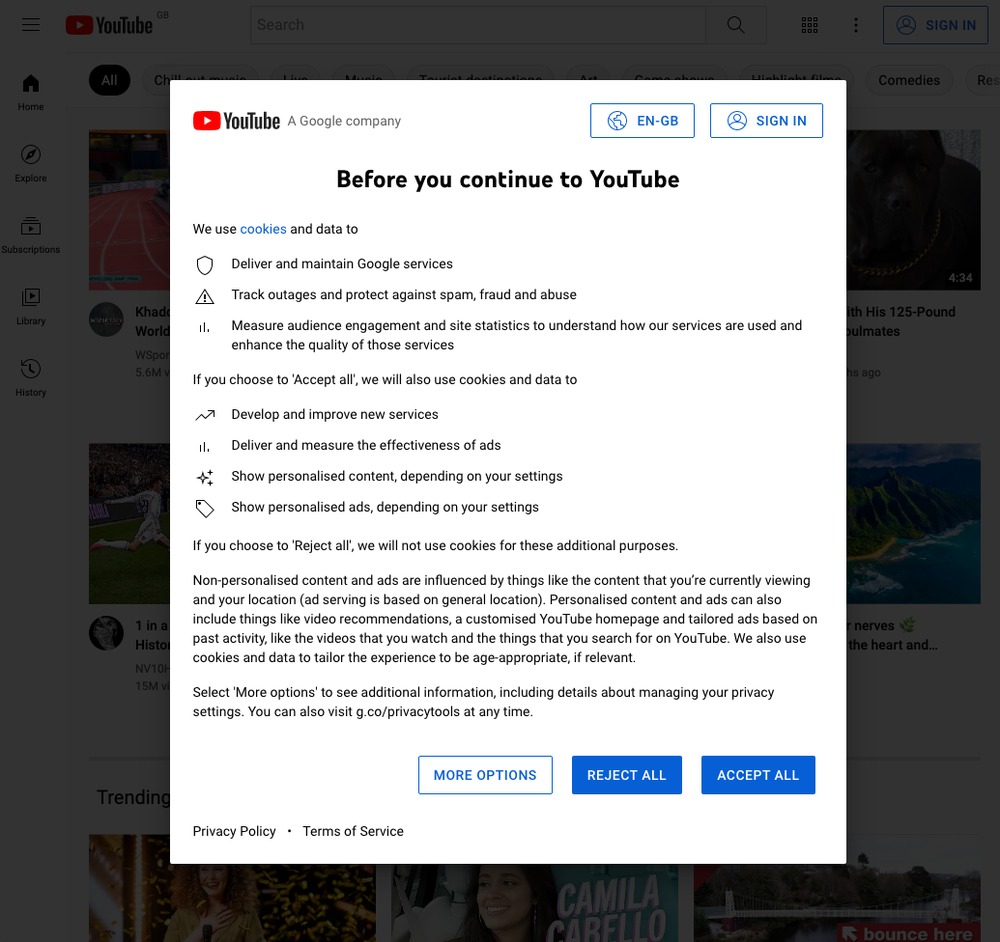Google fixes its confusing cookie banner in Europe with a 'reject all' button
It will soon let European users reject all cookies with a single click after being slapped with a €150 million fine by France.

What you need to know
- Google has announced a new change in the way its cookie banner is displayed in Europe.
- Users in the region will soon see a single-click button to reject all cookies at once.
- The new implementation will appear when visiting Google Search or YouTube.
Google's current method of allowing users to reject cookies is so complicated that you'll find it more convenient to just accept them, but the search giant is rolling out an update in Europe to remedy this issue.
European users will soon see a more straightforward option to "reject all" cookies Google wants to store in their browsers. The new button will appear when you visit Google Search and YouTube.
Prior to this change, Google's cookie consent banner allowed you to accept all cookies with a single click, but forced you to click multiple buttons to reject them all at once.
As a result, earlier this year, France's data protection agency CNIL fined Google €150 million ($170 million) for violating current regulations regarding how tracking cookies should be presented to users.
"In June 2021, the CNIL carried out an online investigation on these websites and found that, while they offer a button allowing immediate acceptance of cookies, the sites do not implement an equivalent solution (button or other) enabling the user to refuse the deposit of cookies equally easily," CNIL said in January. "Several clicks are required to refuse all cookies, against a single one to accept them."
Google is rectifying the situation by introducing a redesigned cookie popup with three options: "Accept all," "Reject all," and "More options."
Google said in a blog post that the updated banner began to appear on YouTube earlier this month. It's worth noting that these buttons will only show up if you're signed out of your account or browsing in Incognito mode.
Get the latest news from Android Central, your trusted companion in the world of Android
Otherwise, you'll need to visit Google’s data and privacy menu to adjust your cookie settings.
Cookies are small files that websites store in your browser to track your site activity or to target personalized ads to you, among other things. However, depending on how these trackers are implemented, exercising control over them can be confusing.
Google isn't the only internet firm that uses complex methods to display cookie options. As noted by NOYB, a non-profit group in Europe promoting privacy laws, companies use so-called “dark-patterns” to make "rejecting cookies extremely complicated."
As a result, these methods force "more than 90% of users to click the 'accept' button while industry statistics show that only 3% actually want to agree," NOYB said in March.
Google's latest tweak should address this disparity and provide balanced options for those who do not want to be tracked as well as those who consent to cookie tracking.
The rollout kicked off in France. Google will soon implement the update across the rest of the European Economic Area, the UK, and Switzerland.

Jay Bonggolto always keeps a nose for news. He has been writing about consumer tech and apps for as long as he can remember, and he has used a variety of Android phones since falling in love with Jelly Bean. Send him a direct message via X or LinkedIn.

